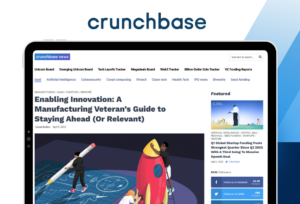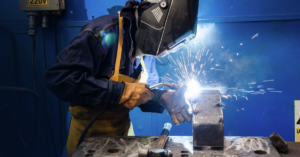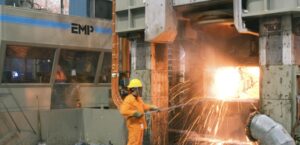Industry Challenges and Solutions for the Capital Equipment Industry

Many companies rely on the capital equipment industry, which supplies the machines, technology, and products needed to manufacture or provide services. The S&P Global industry top trends for 2019 forecasted industry-wide revenue growth of about 3.5 percent over a year, benefiting from a supportive global economy and a steady increase in order intake. However, the industry is still facing challenges as the world adjusts to changes in technology and the way business-to-business transactions work.
Luckily, there are solutions for every challenge facing the capital equipment industry, particularly in embracing modern technology. This industry is evolving, and well-informed and strategic decision-making can ensure that companies continue to thrive.
Challenges Facing the Capital Equipment Industry
Adopting a New Model (Product-as-a-Service)
Businesses and organizations that previously relied on the capital equipment industry to purchase high-cost, but limited-use equipment now want to get more for their money. Leasing or otherwise temporarily accessing products and services is much more appealing to businesses who wish to pay for what they use, and only what they use. As a result, the capital equipment industry has to adopt a new model, switching to product-as-a-service to meet the needs of clients.
Training New and Existing Staff
As companies in the capital equipment industry change their model, the way staff are supported needs to change, too. Employees require the right skills and training to answer client questions, fix technical difficulties, and advise on specific products-as-a-service. The team needs to handle processes, service-level agreements, customer service, and more. That may mean hiring new people, training existing staff, or a combination of both, all of which takes time, money, and planning.
Technology Solutions for Capital Equipment Industry Challenges
The crucial first tech solution lies in automation. With shop floor automation, enterprise plans and manufacturing activities are easily linked, automating production schedules, dispatch, and work centers alike. Products move quickly from concepts to a customer’s hands, so product-as-a-service is as successful as possible.
Service and repair technology is another essential solution. After putting in the resources and effort to hire and train staff on best practices for service and repair, technology needs to work in support. With the right tech, companies can:
- track field orders and staff, including mobile reporting from field technicians
- manage repairs that come back to the company, and
- schedule and complete in-house maintenance work
Infor CloudSuite Industrial ERP for the Equipment Industry
CloudSuite is a core solution to the problems the capital equipment industry is facing.
With features and solutions specific to the industry, CloudSuite users can control, track, and fully visualize everything about their equipment, products, and services. You can read more about how CloudSuite is built for the capital equipment industry here. In short, CloudSuite works extremely well to configure products, manage products, automate the shop floor, and ensure high-quality service and repair.
For more information on how CloudSuite can help your company, call our team at Decision Resources, at 412.562.9660 or email info@decision.com.
Similar Blogs

Decision Resources Featured on Crunchbase

Chips, drugs, and steel — how to prepare for Trump tariffs





